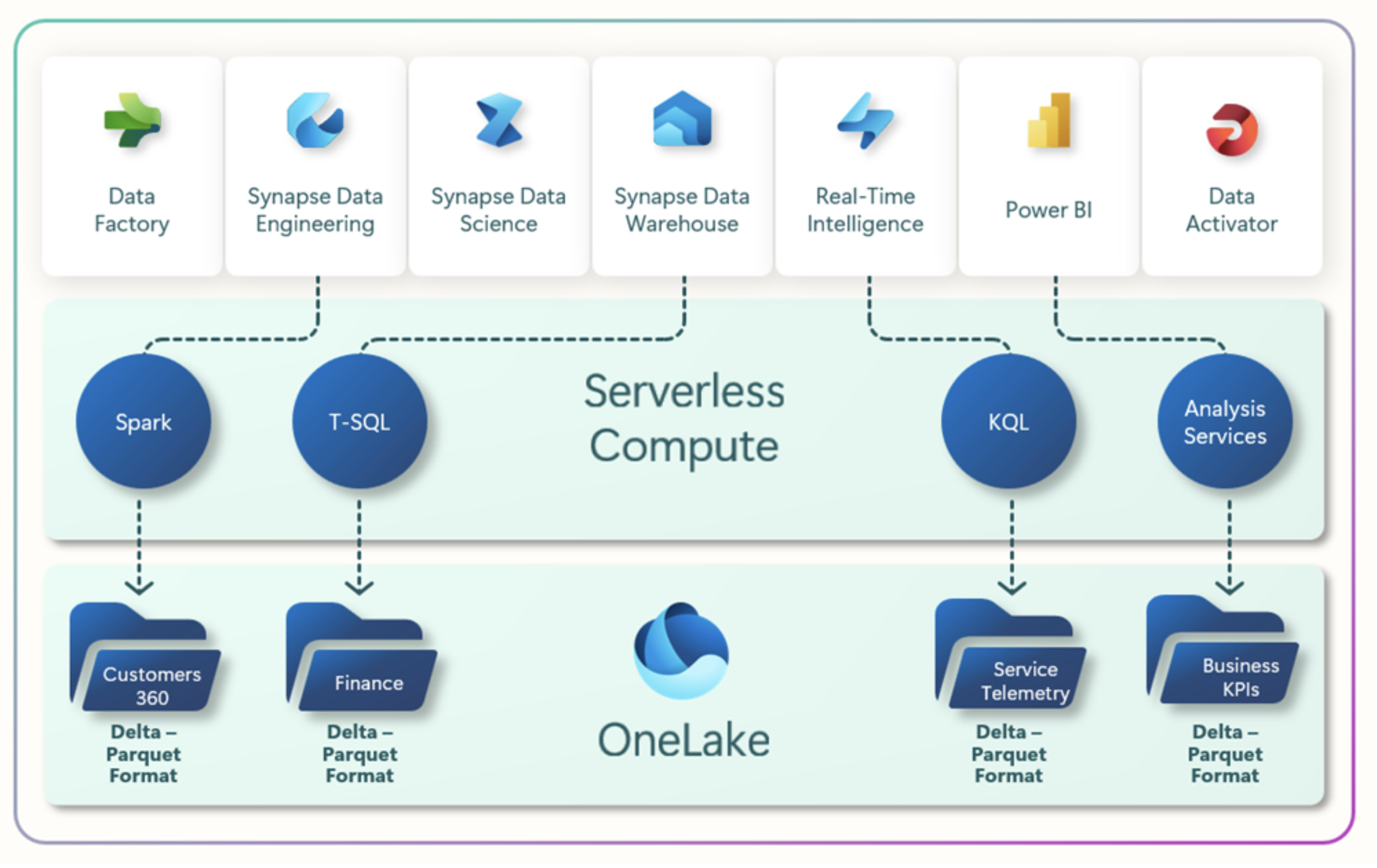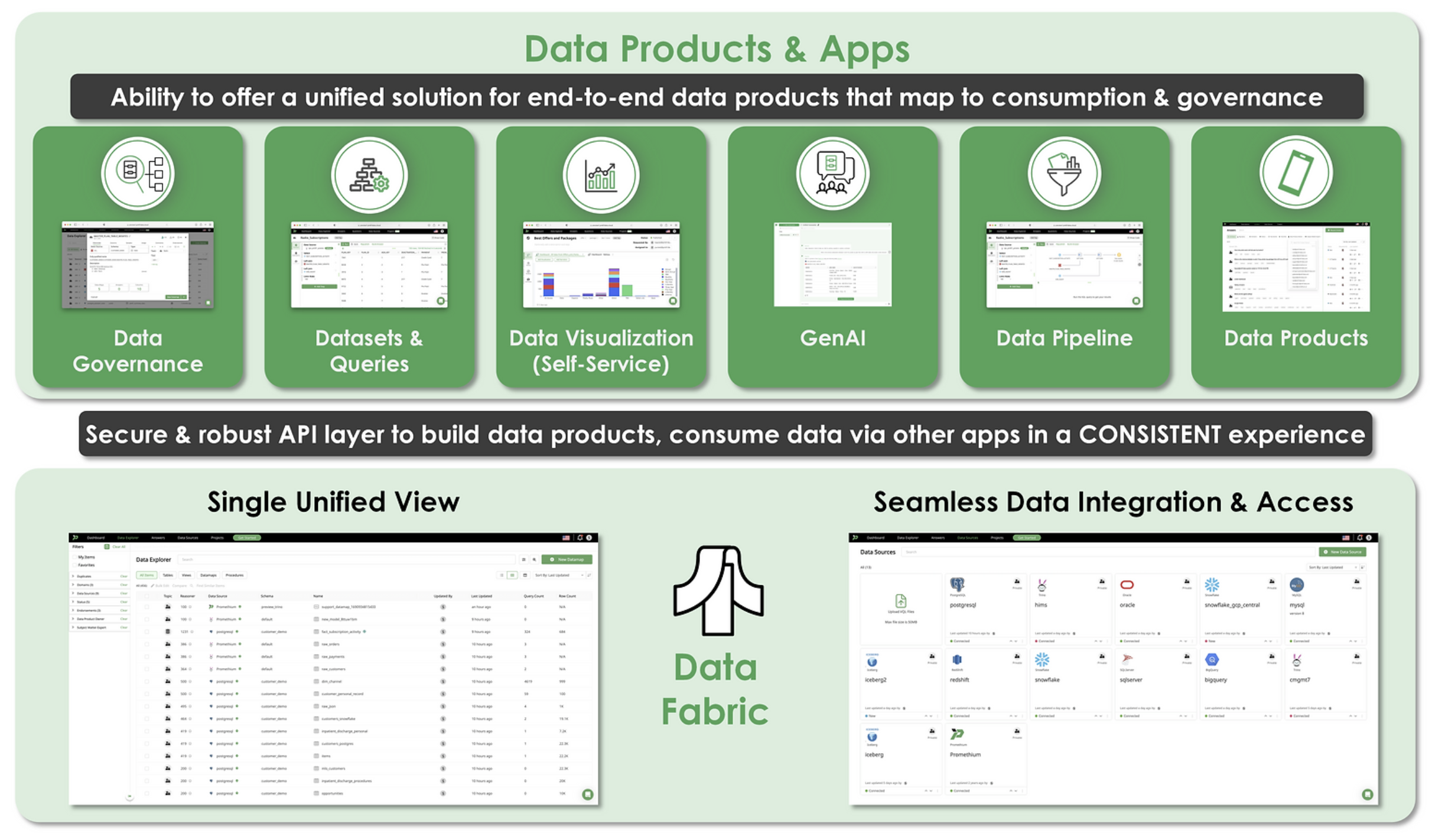For organizations seeking a more agile, comprehensive, and efficient way to manage and utilize their data, data fabric has emerged as a powerful architectural approach. A data fabric addresses these needs by creating an integrated layer that connects disparate data sources and delivers unified access to data in real-time. According to Gartner, a data fabric provides an abstraction layer of integrated data across multiple sources, whether they are on-premises, in the cloud, or hybrid environments. It enables rapid transformation of data into business-ready insights shared across a distributed environment. To learn more about the latest trends for data fabric technology, read our Gartner hype cycle review here.
However, not all data fabric solutions are created equal because not all data fabrics were designed with the same goal in mind. In this blog post, we’ll explore the key differences between Promethium and Microsoft Fabric – two of the pre-eminent data fabric solutions on the market – focusing on their unique strengths and why Promethium may offer a more flexible and powerful solution for your organization.
Microsoft Fabric vs. Promethium
Microsoft Fabric: Centralized Management for the Azure Ecosystem

Microsoft Fabric is a comprehensive data management and analytics platform designed to serve organizations deeply embedded within the Azure ecosystem. It is actually NOT one product but a framework that creates a cohesive environment where data from various Azure services and third-party sources can be seamlessly integrated, managed, and analyzed. The platform provides a centralized layer that consolidates data access and governance, essentially bundling several originally separate Microsoft product suites, ensuring that organizations leveraging Microsoft’s tools can efficiently manage their data workflows. By aligning closely with Azure, Microsoft Fabric helps businesses maximize their investment in the Microsoft cloud, enabling advanced analytics, reporting, and decision-making through a unified, secure infrastructure.
However, Microsoft Fabric’s deep integration with Azure comes with certain trade-offs. To fully utilize its capabilities, data must be ingested into Microsoft’s proprietary OneLake storage, converted into Delta-Parquet format, and managed within the Azure ecosystem.
This requirement may introduce complexities for organizations with diverse data landscapes spread across different platforms, raising concerns about the challenges associated with data migration.
The other consideration is vendor lock-in, as customers adopting Microsoft Fabric will only see benefit from the solution under the following conditions:
In short, a commitment to Microsoft Fabric is a commitment to all Azure products and services which may be desirable if an organization is already heavily invested in Microsoft or does not see any disruption in migrating all its data and data management tools onto the Microsoft Azure platform.
Promethium: The Source-Agnostic, AI-Powered Data Fabric

Promethium’s data fabric IS actually a SINGLE product that delivers an end-to-end experience to answer business questions via GenAI or automate the building of data products. The goal of the Promethium data fabric is to provide the best user experience to discover, access and consume data without the need to wait for weeks or months for data teams using multiple separate products to complete the task. Unlike traditional data platforms, Promethium data fabric automates the end-to-end process of creating, integrating, and governing data products, reducing the need to move or store physical data.
It leverages cutting-edge technologies like natural language processing, GenAI, virtual data integration and machine learning to streamline data workflows, enabling organizations to rapidly transform raw data into actionable insights. Promethium’s AI-powered capabilities allow data professionals to focus on strategic initiatives, enhancing productivity and efficiency across the board. Rather than combining separate products and services together, Promethium’s Data Fabric is INSTANTLY available upon install, which greatly accelerates time to value for organizations. Promethium seamlessly integrates on top of your existing architecture – with Promethium, there is no need to “build” the data fabric.
Compared to Microsoft, Promethium takes a different approach in a few ways:
This flexibility preserves existing investments in data infrastructure and eliminates the risks and costs associated with moving data into a single ecosystem.
Why Organizations Choose Promethium
When comparing Promethium and Microsoft Fabric, Promethium offers several key advantages that make it the platform of choice for many organizations:
Want to learn more about how Promethium’s Data Fabric enables self-service and trusted Gen AI across your data ecosystem?
Click here to download the full solution brief (no form fill required)!
Conclusion
While both Promethium and Microsoft Fabric offer robust data fabric solutions, Promethium’s flexibility, source agnosticism, and AI-powered automation make it a more compelling choice for organizations looking to maximize the value of their data without being locked into the Microsoft ecosystem. Promethium’s approach allows businesses to connect to any data source, access it in real-time, and automate data management processes, all while maintaining control over their data infrastructure.
For organizations seeking a data fabric solution that adapts to their existing environment and future needs, Promethium is the clear choice. Its ability to democratize data access, streamline operations, and provide near real-time insights sets it apart as a leader in the data fabric space. Reach out to us today and schedule a personalized demo to learn more about how Promethium can help your organization.




